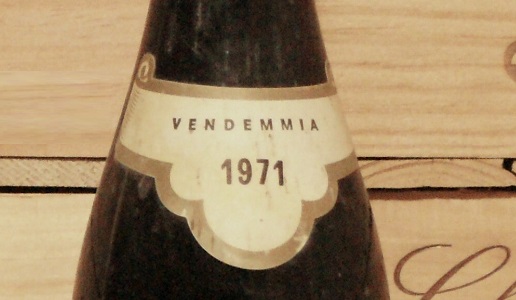Once upon a time: 1971

Aside from being an excellent vintage, 1971 was a watershed year for producers who became convinced they could make great wine in Italy on the level of those in France.
“Not bad this Nebbiolo, Gino”, “You fool, this is not a Nebbiolo, it is a Barbaresco Santo Stefano di Neive Riserva 1971 from Bruno Giacosa!” This exchange, which for me was a scolding, took place during the dinner for the Risit d’Aur, an award created at the start of the 1980s by the Nonino family. Gino was Luigi Veronelli and I was taking my first, insecure baby steps in the wine world.
But what is more important is that the wine in question was a 1971, an historic year for Italian winemaking. It was a magnificent harvest throughout Italy, especially for Piedmont and Tuscany, although the south also produced some legendary reds, like the very great Taurasi Riserva Mastroberardino. The year produced the great Brunello Riserva wines of Biondi Santi, Barbi Colombini and Costanti. There were the formidable Barolo like Monfortino, Brunate Cogno Marcarini, Monfalletto Cordero di Montezemolo and the one from Bartolo Mascarello. Then, obviously, there were the Barbaresco from Giacosa, the Rabajà of Prunotto and Sori from Gaja, Amarone Bertani, Gattinara Travaglini and many, many others. This was also the vintage that probably established the reputation of Sassicaia. And it saw the debut of Tignanello, which came out that year with the label of Silvio Coppola as a “table wine”. Cabernet Sauvignon was not part of the blend at the time and although it was made with Sangiovese and Canaiolo, it could not qualify as a Chianti Classico because the blend did not include white grapes that the regulations of the era demanded. Tignanello was also the first “modern” wine in that, aside from its origin, the vineyard of the same name in Mercatale, it was also the product of a project that also included design and marketing. And it also marked the beginning of a winning trend that continues to this day.
But what really makes 1971 so special is that, aside from being a spectacular harvest that produced many outstanding wines, this year was a watershed one that led to an important realization in the world of wine. And this was that Italy, too, could produce wines that, in regard to quality and reliability, were on the same level as the great French ones, not just those of Bordeaux but also Burgundy, even if they were not as well-known at time.
Furthermore, a community of wine lovers was forming in Italy that, thanks to the first courses offered by the sommelier groups Ais and Onav, was becoming technically proficient. The great reds of 1971, of course, did not come out until between 1975 and ’78 but if many producers began to realize that they could turn out higher quality wines that could fetch a higher price, this was also because the Italian wine world began to feel the great winds of change that society was experiencing.

 Italiano
Italiano






